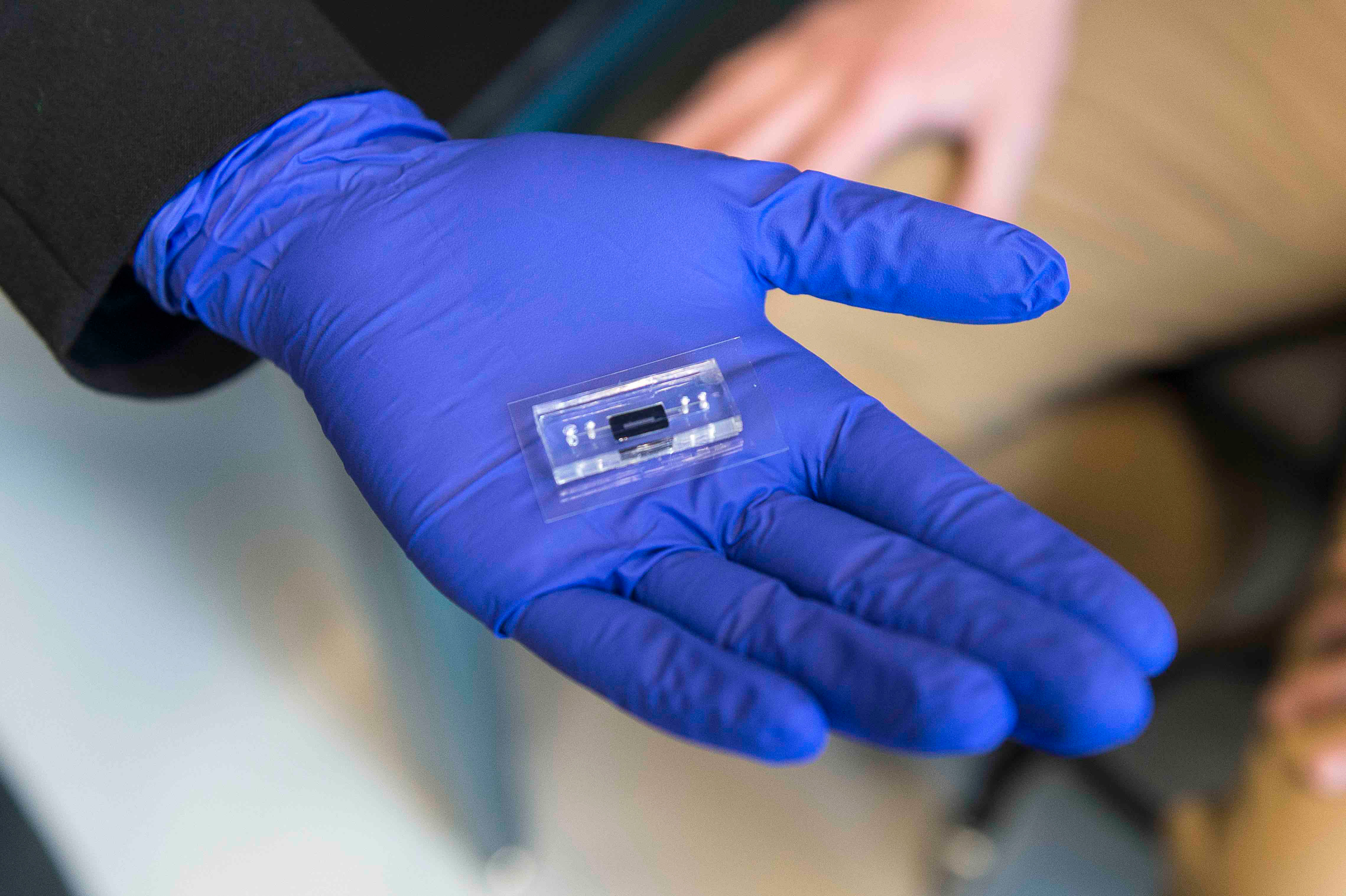Researcher bridges biology and computing with processing in DNA storage
New work in developing a computational system results in an advanced neural network processor
Photography/RIT
Microfluidic devices being built in RIT engineering laboratories are being explored as new options for data storage on DNA. RIT researchers have discovered the means to bridge biology and data.
An engineering researcher at RIT has discovered the means to process data using DNA.
Amlan Ganguly, computer engineering department head in RIT’s Kate Gleason College of Engineering, and researchers at the University of Minnesota, designed a microfluidic integrated circuit to perform complex operations through artificial neural network computations on data stored in DNA.
Their biocomputing design is a breakthrough that builds on innovative DNA engineering and computing system advances.
“We are in the age of big data that needs to be stored somewhere. We don’t think that more data centers are the answer, or even the best answer. Each data center requires the equivalent of a city block of power. Building, maintaining, and operating more traditional data centers is not sustainable,” said Ganguly, who added data stored on DNA is a largely unexplored area of research.
“DNA is excellent at storing information, in fact, it is much better than the electronic modes of memory because it is about 3-to-6 orders of magnitude more compact than most memory hardware that we have; it is also much more reliable and durable.”
The research team’s work today can lay the foundation to store the huge amounts of data generated by millions of personal and commercial tech devices. More robust storage capacity could improve archival data searches and forensics or medical sciences and biomedical applications where computing functions must be live-tissue compatible.
Results from the study were published in PLOS One Journal in the fall.
DNA and computing have several common functions: sequencing, or reading data, and synthesizing, or writing data. By beginning to manipulate materials at the molecular level, researchers are developing ways to decrease the electronics aspect of tech storage to increase use of biocompatible and highly compact storage and processing systems.
“We proposed to represent numbers through concentrations of solutions containing specifically manipulated DNA molecules and computing operations as manipulation of DNA molecules—operations like addition and multiplication and other non-linear functions necessary for network computations can be performed. That is the bridge from storage to computation and using DNA as a vehicle to do the computation,” Ganguly said.
The researchers are designing a prototype microfluidic system, a lab-on-chip device. It is a miniaturized system that can provide the output of an artificial neural network, which is a basic artificial intelligence algorithm. The microfluidic device functions as both a sensor and mini-computer processor consisting of a series of small channels with embedded nanotechnology sensors to separate, detect, and attract molecules in liquid samples.
Ganguly’s team is building a larger-scaled microfluidic device with the help of students in the engineering college’s senior design program. A larger model will help visualize the functions that the team is trying to achieve. Eventually, the development of a new computing structure may have additional environmental benefits.
“A computer made out of this DNA substrate is going to be far more sustainable than the traditional electronics we have now,” he said.



